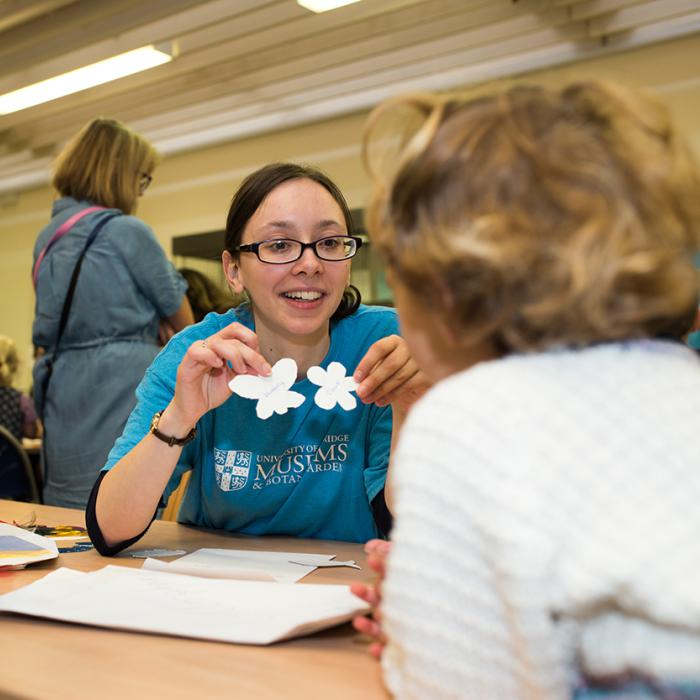Paul Kindersley and a troupe of performers will perform Ship of Fools, a play written by Kindersley and inspired by a painting by Dutch artist Hieronymus Bosch (1450-1516). Bosch’s Ship of Fools depicts a boatload of merrymakers indulging in earthly pleasures while unwittingly sailing towards their doom. The performance will last 30 minutes and will take place amongst Kindersley’s installation of handpainted drapery in the gallery.
FREE, come along.
Join Sarah Wood for a talk about her work in ‘The Cambridge Show’.
FREE, come along
FREE, booking recommended.
Programme
As part of this event artist Paul Kindersley and a carnivalesque troupe of performers will perform Ship of Fools, a play written by Kindersley and inspired by a painting by Dutch artist Hieronymus Bosch (1450-1516). The performance will last 30 minutes and will take place amongst Kindersley’s installation of handprinted drapery in the gallery.
In this new series of beautiful, large-scale and prints, New Zealand artist Marian Maguire imagines how the passing millenia might have affected the traditional roles of the ancient Greek goddesses.
Assuming the Greek gods are immortal and therefore have a continued presence, Maguire wonders: would they do things differently? Would they stay the same and maintain the status quo or would they choose to change, if they could see us now? Would they stay, or would they walk away?
Can we listen to a painting? What does music look like?
Artistic and musical collaborations for the stage sit alongside works which employ music-making as a visual metaphor for love. Others reference music’s ability to trigger an emotional response without a visual cue. The tension between abstract and figurative, graphic and sonic, is alluded to through the display of musical scores alongside drawings and prints.
Rembrandt made etchings of female nudes during two distinct periods of his career: in the 1630s, and another two decades later. He depicted his models naturalistically, naar ‘t leven (‘from life’), in informal poses, concentrating on the sensuousness of their flesh rather than on the idealised female body. From shortly after Rembrandt’s death up until the mid-20th century this unidealised treatment was fiercely attacked by critics, who used words such as ‘intolerable’, ‘ill-shaped’ and ‘monstrous’ to describe his departure from the classical norms of beauty.
This research‐led multi-sensory exhibition will showcase hidden and newly‐conserved treasures from the Fitzwilliam and other collections, and features four spectacular historical reconstructions with food at their centre, including a Jacobean sugar banquet, a European feasting table and a Georgian confectioner’s workshop.
About Artist: Unknown
From the ancient to the contemporary – whether in a museum, book or auction house – the way we engage with art has revolved around the cult of the individual. But what happens when we don’t know who made something?
Artist: Unknown takes this question as its focus, bringing together for the first time an extraordinary selection of anonymous art and artefacts from the University of Cambridge’s renowned museums and collections.
About Artist: Unknown
From the ancient to the contemporary – whether in a museum, book or auction house – the way we engage with art has revolved around the cult of the individual. But what happens when we don’t know who made something?
Artist: Unknown takes this question as its focus, bringing together for the first time an extraordinary selection of anonymous art and artefacts from the University of Cambridge’s renowned museums and collections.
Join us for a short talk by Rosy Greenlees, Executive Director, Crafts Councilin the Ede Room on the second floor.
Greenless will respond to the Jennifer Lee: the potter’s space exhibition and discuss how the Crafts Council supports contemporary ceramics.
FREE, booking recommended

